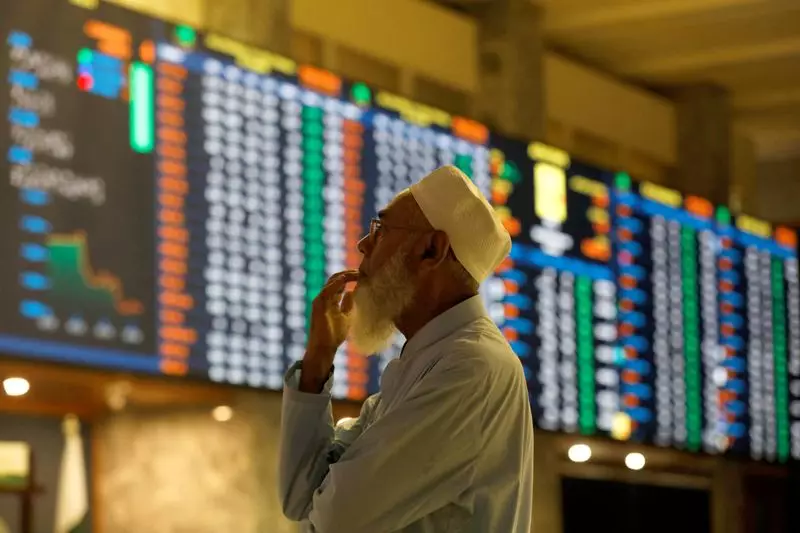Pakistan’s benchmark share index experienced a significant increase of 1.44% on Monday, reaching a new record high following the announcement of a staff level agreement (SLA) between the International Monetary Fund (IMF) and Pakistan. This agreement entails a $7 billion, 37-month loan program that aims to provide much-needed financial stability to the country. The negotiations for this program began in May after Pakistan successfully completed a $3 billion program, which played a crucial role in stabilizing the economy and preventing a sovereign debt default.
The market response to the news of the $7 billion loan program has been overwhelmingly positive, with the benchmark share index nearly doubling since the signing of the previous SLA for a $3 billion standby arrangement. Adnan Sheikh, assistant vice president of research at Pak Kuwait Investment Company, expressed optimism about the market’s reaction to the agreement, noting that the expectations were largely met. He highlighted that the IMF deal has historically been a highly politicized event, but this time, the agreement was reached quietly between the government and IMF staff.
Looking ahead, there are expectations of an interest rate cut by Pakistan’s central bank, despite a temporary increase in inflation due to budgetary measures. Additionally, there are anticipations of inflows amounting to $2-3 billion in the upcoming month. However, it is important to note that the SLA agreement is contingent upon approval by the IMF’s Executive Board and the assurance of necessary financing from Pakistan’s development and bilateral partners. This includes rollovers or disbursements from long-time allies such as Saudi Arabia, the United Arab Emirates, and China.
The primary objective of the new $7 billion loan program is to solidify stability and foster inclusive growth in a country that has been fraught with economic challenges for decades. Pakistan has a history of boom-and-bust cycles, leading to 22 IMF bailouts since 1958. As of July 11, Pakistan stands as the IMF’s fifth-largest debtor, owing a substantial amount of $6.28 billion. Therefore, this new loan program is viewed as a crucial step towards addressing the longstanding economic issues in the South Asian nation.

